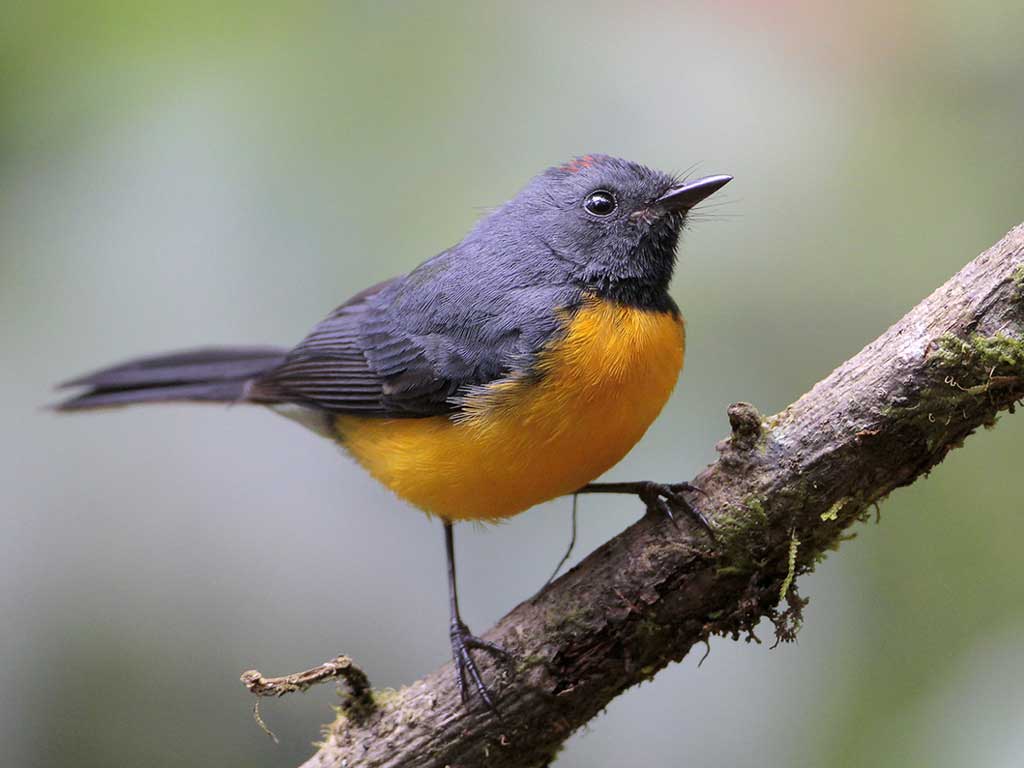The Slate-throated Redstart is also known as the Slate-throated Whitestart.
Description of the Slate-throated Redstart
BREEDING MALE
A grayish-blue bird with a dark chestnut cap.
Face and head darker than back. Outer tail feathers tipped with white.
Belly color ranges from yellow in the southern part of its range to red in the northern part of its range.
Female
Seasonal change in appearance
Juvenile
Habitat
Varied. Humid forest, open woodland, pine-oak and second growth.
See The Wilson Journal of Ornithology 122(1):29–38, 2010
“BREEDING BIOLOGY AND NESTING SUCCESS OF THE SLATE-
THROATED WHITESTART (MYIOBORUS MINIATUS) IN
MONTEVERDE, COSTA RICA” for additional information on this species.
Diet
Behavior
Range
Fun Facts
Vocalizations
Similar Species
- The Painted Redstart is similar but has white wing patches and darker upperparts.
Nesting
Color: Whitish in color with darker markings.Incubation and fledging:
– The young hatch at about 14-15 days?
– Young fledge at about 11 days, though remaining dependent on the adults for some time.


